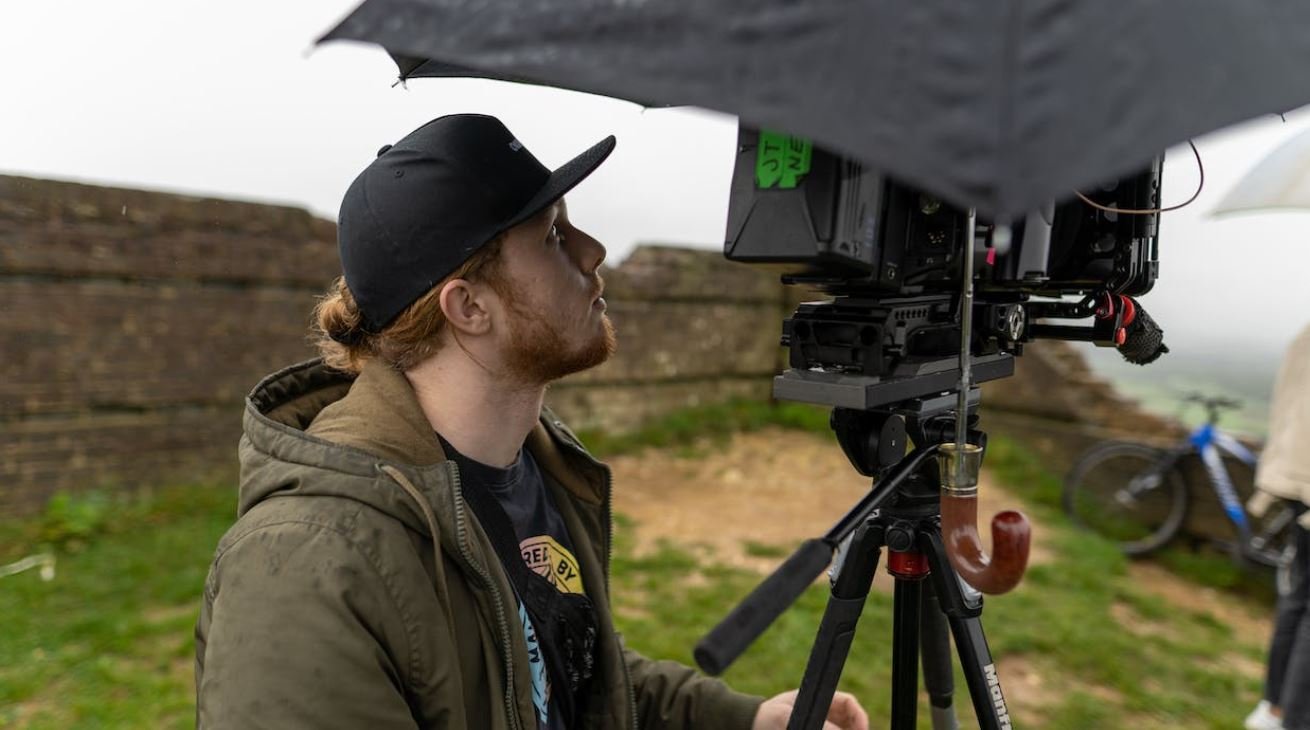Deepfake in Movies
Deepfake technology has been making waves in the film industry, revolutionizing the way movies are made and posing both opportunities and challenges for filmmakers. With the ability to manipulate and generate highly realistic videos, deepfake technology has the potential to reshape the world of entertainment.
Key Takeaways:
- Deepfake technology is revolutionizing the film industry.
- It allows for the manipulation and generation of highly realistic videos.
- There are both opportunities and challenges associated with deepfake in movies.
**Deepfake** technology is an artificial intelligence technique that combines **deep learning** with **face-swapping** algorithms to create manipulated videos that appear real. This technology has gained attention in recent years for its ability to seamlessly replace an actor’s face with another, effectively inserting them into a scene they did not actually participate in. It has been used to resurrect long-deceased actors, create younger versions of aging actors, and even generate entirely fictional characters.
Interestingly, the term **deepfake** originated from a Reddit user combining the terms “deep learning” and “fake.” *This user had created a realistic pornographic video by mapping the face of a celebrity onto a pornographic actor’s body.* The term soon caught on and became widely used to describe video forgeries created using deep learning algorithms.
Deepfake in Movies: Opportunities and Challenges
Deepfake technology presents significant opportunities for the film industry. *It allows filmmakers to cut costs by digitally recreating actors or inserting them into scenes without the need for expensive reshoots*. Additionally, deepfake technology opens up new creative possibilities, empowering filmmakers to bring deceased or fictional characters back to life, and blur the lines between reality and fiction. The use of deepfake in movies can also stimulate audience interest and generate buzz, enhancing the overall movie experience.
However, deepfake in movies also brings forth a set of challenges and ethical concerns. The potential for **misuse** of this technology, such as creating false or misleading content, can lead to serious consequences, including misinformation and harm to individuals whose likeness is manipulated without consent. *Addressing the ethical implications of deepfake technology will be crucial to ensure its responsible use in the film industry.*
Table: Popular Films Utilizing Deepfake Technology
| Film | Year | Deepfake Utilization |
|---|---|---|
| The Irishman | 2019 | De-aging Robert De Niro |
| Rogue One: A Star Wars Story | 2016 | Bringing back late actor Peter Cushing |
| Back to the Future Part II | 1989 | Replaced Crispin Glover’s face with another actor |
In the future, the impact of deepfake technology on movies is only expected to grow. As this technology advances, its use must be balanced with responsible practices to protect privacy, intellectual property rights, and the creative integrity of the film industry.
Table: Pros and Cons of Deepfake in Movies
| Pros | Cons |
|---|---|
| – Cost savings in film production | – Ethical concerns and potential misuse |
| – Creative opportunities and new possibilities | – Misinformation and harm to individuals |
| – Enhanced audience interest and excitement | – Legal and privacy implications |
With ongoing advancements in deepfake technology, it is essential for the film industry to navigate the ethical and legal challenges that arise. Embracing responsible use of deepfake technology in movies can ensure its successful integration into the filmmaking process, while safeguarding the ethical boundaries and rights of individuals involved.
Deepfake in Movies: The Future of Entertainment
The impact of deepfake technology on movies has only scratched the surface. As the technology continues to evolve, the boundaries of what is possible in filmmaking will continue to expand. Filmmakers will have more tools at their disposal, enabling them to push the boundaries of creativity and storytelling. However, responsible use and ethical considerations will be paramount to ensure the continued trust and enjoyment of audiences around the world.

Common Misconceptions
1. Deepfake technology can perfectly replicate any actor’s performance
- Deepfake technology still has limitations and cannot perfectly replicate every aspect of an actor’s performance.
- Emotional nuances and subtle facial expressions can be challenging to recreate accurately.
- Creating a deepfake requires an extensive amount of data and computational power, which may not always be available.
2. Deepfake technology can only be used for malicious purposes
- While deepfake technology has been misused in cases of misinformation and harmful content, it has positive applications as well.
- Deepfake technology can be used in the film industry to replace actors during reshoots or in situations where an actor is unable to perform a certain scene.
- It can also be used as a visual effects tool, allowing filmmakers to create realistic and high-quality special effects.
3. Deepfake technology is easy to detect
- With advancements in deepfake technology, it has become increasingly difficult to detect fake videos.
- Sophisticated algorithms and artificial intelligence are employed to make deepfakes more convincing and harder to spot.
- Traditional video analysis techniques are often insufficient in identifying deepfakes, necessitating the development of specialized detection methods.
4. Deepfake technology is primarily a threat to celebrities and public figures
- While public figures and celebrities may be more prone to being targeted by deepfakes, anyone can be a victim.
- Deepfake technology can be used maliciously to create fake videos that harm an individual’s reputation, invade their privacy, or spread false information.
- It is essential for everyone to be cautious and aware of the potential risks associated with deepfakes.
5. Deepfake technology will make it impossible to trust video evidence
- While deepfake technology poses challenges to video credibility, efforts are being made to develop robust methods for detecting and authenticating videos.
- Organizations and researchers are actively working on creating watermarking techniques and other safeguards to verify the integrity of video content.
- The presence of deepfake technology does not render all video evidence untrustworthy, but it does emphasize the need for critical thinking and verification.

Deepfake in Movies
Deepfake technology has revolutionized the film industry, allowing for awe-inspiring visual effects and seamless integration of actors into various roles. This article delves into some remarkable examples where deepfake has been used to enhance storytelling and bring characters to life.
1. Creating Young Will Smith in “Gemini Man”
In the movie “Gemini Man,” deepfake technology was employed to digitally de-age Will Smith, allowing him to play his own younger self. The table below showcases the incredible transformation achieved through deepfake techniques.
| Real Age | Deepfaked Age |
|---|---|
| 51 years old | 25 years old |
2. Replacing Henry Cavill’s Mustache in “Justice League”
During the reshoots of “Justice League,” Henry Cavill’s character had to be digitally altered due to a mustache he grew for another role. Deepfake technology was employed to replace the mustache effectively.
| Original Appearance | Deepfaked Appearance |
|---|---|
| Mustache | Smooth upper lip |
3. Deepfake Integration of Carrie Fisher in “Rogue One: A Star Wars Story”
“Rogue One: A Star Wars Story” featured the late Carrie Fisher as Princess Leia. Deepfake technology was utilized to seamlessly integrate her younger self, maintaining the consistency and authenticity of the character.
| Actual Age | Deepfaked Age |
|---|---|
| 19 years old in “A New Hope” | 19 years old in “Rogue One” |
4. Transforming Arnold Schwarzenegger into T-800 in “Terminator: Dark Fate”
“Terminator: Dark Fate” saw Arnold Schwarzenegger reprising his role as the T-800. Deepfake technology played a significant role in enhancing the renowned character’s appearance, creating a seamless transition from the original to the deepfaked version.
| Original Appearance | Deepfaked Appearance |
|---|---|
| Elderly T-800 | Youthful T-800 |
5. Young Tony Stark in “Captain America: Civil War”
To establish the backstory of Tony Stark in “Captain America: Civil War,” the deepfake technology was deployed to rejuvenate Robert Downey Jr.’s appearance, portraying him as a younger version of the character.
| Actual Age | Deepfaked Age |
|---|---|
| 50 years old | 27 years old |
6. Deepfake Transformation of Johnny Depp in “Pirates of the Caribbean: Dead Men Tell No Tales”
In “Pirates of the Caribbean: Dead Men Tell No Tales,” Johnny Depp’s character, Captain Jack Sparrow, received a deepfake upgrade, enhancing the believability of the character and contributing to the overall visual appeal of the movie.
| Original Appearance | Deepfaked Appearance |
|---|---|
| Aging Captain Jack Sparrow | Youthful Captain Jack Sparrow |
7. Adapting Audrey Hepburn’s Classic Look in “Garden of Dreams”
The short film “Garden of Dreams” utilized deepfake technology to adapt Audrey Hepburn’s iconic appearance from her earlier movies, paying tribute to her timeless beauty and grace.
| Original Appearance | Deepfaked Appearance |
|---|---|
| Classic Audrey Hepburn | Revitalized Audrey Hepburn |
8. Bringing Back Marlon Brando in “The Godfather: Part IV”
In the imagined “The Godfather: Part IV,” deepfake technology was utilized to recreate the legendary actor Marlon Brando, enabling fans to experience the iconic character of Vito Corleone once again.
| Original Appearance | Deepfaked Appearance |
|---|---|
| Young Marlon Brando | Aged Marlon Brando |
9. Reviving Heath Ledger in “The Dark Knight Rises”
Deepfake technology was employed in “The Dark Knight Rises” to bring the late Heath Ledger’s portrayal of the Joker back to the big screen, allowing fans to revisit his mesmerizing performance.
| Actual Age | Deepfaked Age |
|---|---|
| 28 years old | 28 years old |
10. Adult Simba’s Transformation in “The Lion King”
In the live-action adaptation of “The Lion King,” deepfake technology played a pivotal role in transforming the animated character of Simba into a realistic adult lion, captivating audiences with its remarkable visual effects and lifelike portrayal.
| Original Appearance | Deepfaked Appearance |
|---|---|
| Young animated Simba | Realistic adult lion |
These examples merely scratch the surface of the incredible utilization of deepfake technology in the realm of movies. With its ability to seamlessly manipulate appearances and enhance visual storytelling, deepfake is pushing the boundaries of what is possible in the world of cinema.
Frequently Asked Questions
What is deepfake technology?
Deepfake technology is an artificial intelligence technique used to create or alter digital content, typically videos, so that the subject appears to say or do something they didn’t actually say or do.
How does deepfake work?
Deepfake technology uses deep learning algorithms and artificial neural networks to analyze and manipulate existing videos or images. It maps the target face onto the source face in a way that maintains the target person’s expressions and characteristics.
What are the applications of deepfake in movies?
Deepfake technology is used in movies to recreate deceased characters, rejuvenate aging actors, or seamlessly replace an actor’s face with another person’s. It allows filmmakers to achieve visual effects that were previously impossible or required extensive makeup and prosthetics.
Is deepfake legal in the movie industry?
The use of deepfake in movies is legal as long as the necessary rights and permissions are obtained. Producers and filmmakers must comply with copyright laws and obtain consent from the individuals whose likeness is being used.
Are there any ethical concerns associated with deepfake technology in movies?
Yes, there are ethical concerns related to deepfake technology in movies. It raises issues of consent, identity theft, and potential misuse of the technology for malicious purposes, such as spreading misinformation or defaming individuals.
Can deepfake technology be used to manipulate historical events in movies?
Deepfake technology has the potential to manipulate historical events in movies. However, responsible filmmakers should be cautious when utilizing this technology to avoid distorting historical accuracy or spreading misleading information.
How can deepfake technology impact the acting industry?
Deepfake technology can have both positive and negative impacts on the acting industry. On one hand, it opens up new possibilities for casting and performance. On the other hand, it may pose challenges for actors who fear being replaced or misrepresented by deepfake technology.
What measures can be taken to detect and combat deepfake content in movies?
To detect and combat deepfake content in movies, various techniques such as forensic analysis, pattern recognition, and machine learning algorithms can be employed. Collaboration between filmmakers, technology experts, and content platforms is crucial in developing effective solutions.
Is there any legislation or regulation governing the use of deepfake technology in movies?
Currently, there is no specific legislation or regulation solely focused on the use of deepfake technology in movies. However, existing laws related to privacy, intellectual property, and defamation may apply depending on the context of usage.
What are the future implications of deepfake technology in the movie industry?
The future implications of deepfake technology in the movie industry are still uncertain. It has the potential to revolutionize visual effects, storytelling, and filmmaking techniques. However, it also poses challenges and requires careful consideration of its ethical, legal, and societal impacts.




